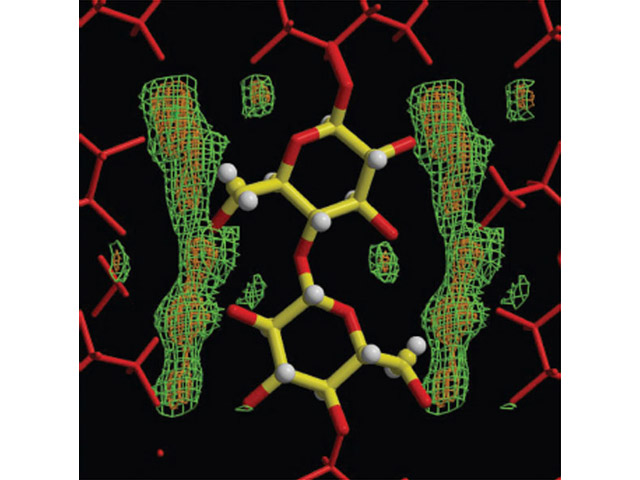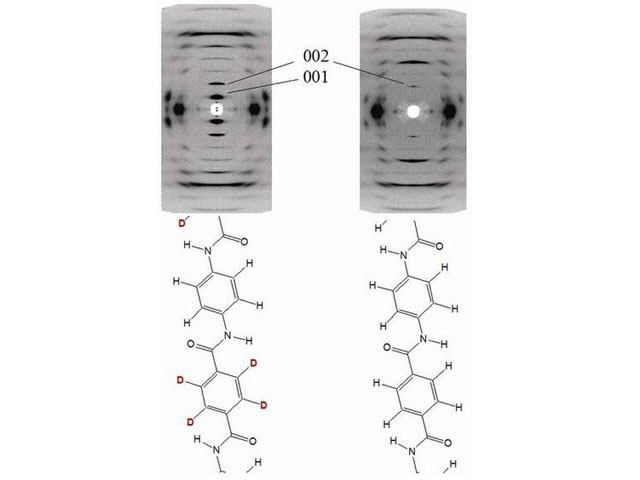D19
Instrument no longer available - Thermal neutron diffractometer for single-crystal and fibre diffraction
 (jpg - 72 Ki)
(jpg - 72 Ki)1- Fourier difference map for cellulose calculated with neutron data recorded from D19The map shows density associated with the cellulose hydroxyl groups.
 (jpg - 51 Ki)
(jpg - 51 Ki)2- Neutron fibre diffraction patternsThese were recorded from fibres of Poly (p-phenylene terephthalamide) (PPTA), known commercially as Kevlar® and Twaron®(left) selectively deuterated and (right) non-deuterated
Fibres
D19 is also a valuable tool for the study of the structure of fibers and the main topics in this field are:
- Hydrogen bonding in biopolymers
- Hydration studies of biopolymers
- Structural studies of industrial polymers
We show here two examples, one from the biopolymer cellulose:
Ref.: Nishiyama et al., J. Am. Chem. Soc., 125, 14200-14306, (2003).
and the other from the industrial polymer PPTA:
Ref.: Parrot I.M. , Urban V. , Gardner K.H. , Forsyth V.T., Nucl. Instr. Meth. in Phys. Research B 238, 7-15 (2005).
The remarkable physical properties of Poly(p-phenylene terephthalamide) - (PPTA, Kevlar® and Twaron) - result from a regular arrangement of hydrogen bonds, forming sheets that stack in a very regular way. However there has been persistent concern about the way in which the sheets stack according to this molecular model. Diffraction patterns from deuterated and non-deuterated samples allowed the arrangement of the Kevlar sheets to be accurately determined in a way that was not possible using X-ray diffraction methods.
